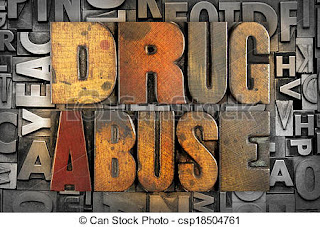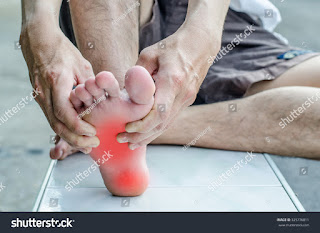An Overview of Drug Abuse
Written by Blessing Ogbomo (PharmD)
"Every form of addiction is bad, no matter whether the narcotic be alcohol or morphine or idealism "
Carl Jung.
Drug abuse clinically known as substance use disorder, is the indiscriminate use of any chemical substance including cigarettes, inhalants, alcohol and others.
-At least 15.3 million persons have drug use disorders.
-The harmful use of alcohol results in 3.3 million deaths each year.
-On average every person in the world aged 15 years or older drinks 6.2 litres of pure alcohol per year.
-It is estimated that 255 million people used illicit drugs such as cannabis, amphetamines, opioids and cocaine, in 2015 which translates into an annual prevalence of illicit drug use of 5.3 percent.
Reference from : World drug report, 2017. (www.who.int/substance_abuse/facts/en/).
"Addiction isn't about substance - you aren't addicted to the substance, you are addicted to the alteration of mood that the substance brings"
Susan Cheever.
Categories of drugs commonly abused include :
Alcohol.
Legal, prescription drugs such as methadone, oxycodone and Zolpidem.
Chemicals such as inhalants.
Illegal drugs such as marijuana, opiates (heroin), stimulants (methamphetamine and cocaine) and hallucinogenics (acids).
Risk factors for drug abuse
"No one is immune from addiction; it afflicts people of all ages, races, classes and professions"
Patrick J. Kennedy.
The risk factors for drug abuse include :
1. Peer pressure.
2. Academic failure or lack of academic motivation.
3. Drug availability in the community.
4. Improper parenting
5. Parent or sibling alcohol/ drug use.
Biological risk factors include:
1. Genetic predisposition towards addictive behavior.
2. Mental illness (Depression, Anxiety as well as other mental illness)
3. Gender: Men are twice as likely to have drug abuse problems.
Signs and symptoms of drug abuse
Physical signs include:
Inability to sleep, unusual laziness, changes in eating habits, tremor, red watery eyes, pupils larger or smaller than usual, extreme hyperactivity, excessive talkativeness, slow or staggering walk, poor physical coordination, irregular heartbeat etc.
Behavioural signs include:
Change in overall attitude, change in activities or hobbies, chronic dishonesty, sudden oversensitivity, difficulty in paying attention, forgetfulness, unexplained need for money, loss of interest in family and family activities etc.
Effects of drug abuse.
Drugs affect the body and brain. Some effects include health consequences that are long lasting and even permanent.
Health problems :
Drug abuse can weaken the immune system, increasing susceptibility to infection.
It also cause cardiovascular conditions ranging from abnormal heart rate to heart attack.
Injected drugs can also lead to collapse veins and infections of the blood vessels and heart valves.
Behavioural problems :
Paranoia, aggressiveness, hallucinations, addiction, impaired judgement, loss of self control etc.
Birth defects drug abuse may pose various risks for pregnant women and their babies.
Social Problems :
Drug abuse can lead to careless driving, violence, stress and child abuse. It can also lead to homelessness, crime, missed work or problems with keeping a job.
Treatment of Drug abuse
There are different types of treatment for drug abuse.
Individual and Group Counseling :
Individual counseling often focuses on reducing or stopping substance use, skill building, adherence to a recovery plan and social, family and professional /educational outcomes. Group counselling provide social reinforcement for pursuit of recovery.
Medications :
Using medication to treat substance use disorder is often referred to as Medication Assisted Treatment (MAT). In this model, medication is used in combination with counseling and behavioral therapies.
Medications can reduce the cravings and other symptoms associated with withdrawal from a substance by occupying receptors in the brain associated with using the drug, block the rewarding sensation that comes with using a substance, or induce negative feeling when a substance is taken.
Medications for Alcohol use disorder include:
Acamprosate
Naltrexone
Disulfiram.
Medications for Tobacco use disorder include:
Bupropion
Varenicline
Medications for Opioid use disorder include:
Naltrexone reduces risk of relapse to opioid use and helps control cravings.
In conclusion, drug abuse is a serious health burden. It has caused a lot of health and social problems and as such there is need for proper awareness, counselling prevention and appropriate treatment.
Edited by Timothy Okooboh (PharmD).








Comments
Post a Comment